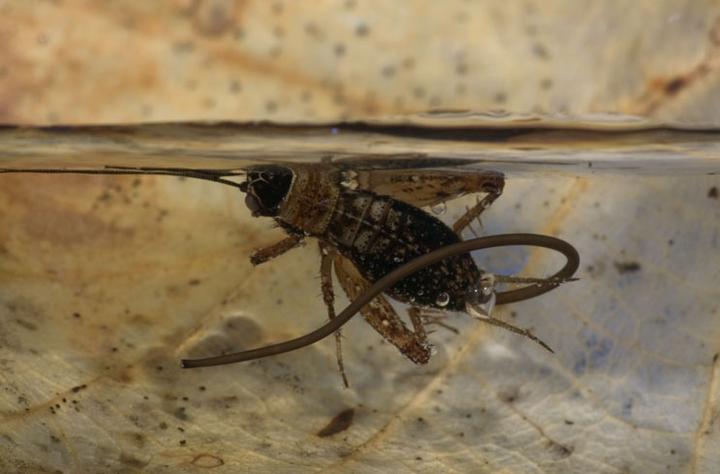Host manipulation by parasites

To complete their life cycle, parasites can manipulate their host. Such example of extended phenotype provides some of the most extraordinary stories in biology.
I have studied two of them:
- Trematode - Gammarus - bird
- Hairworm - cricket
One of the most fascinating examples of parasite-induced host manipulation is that of hairworms (nematomorpha). As juveniles, freshwater hairworms are mostly parasites of insects but, once adult, they are free living and need to enter water to gather with other males and females, making Gordian knots, to mate and produce infective stages.
Insects, such as crickets, harboring mature hairworms display a new and original behavior: they seek water to immerse themselves. We found that such infected insects were attracted by the light, which seems to be the best way to find an open space with a water body in a forest (Ponton et al. 2011). This behavior, originally absent from the host’s repertoire, allows the parasite to emerge from its host into the aquatic environment it needs to continue its life cycle.
During the time the hairworm is leaving its host, the cricket is active at the surface and attractive to aquatic predators such as fish and frogs. If they are not predated, we showed that the host can survive and the attraction to light is abolished (Ponton et al. 2011). However, if the host is predated, death of the worm would be expected unless the parasite were capable of an antipredator response. We found that in fact, the hairworm is able to fight its way out (Ponton et al. 2006a) and survive without apparent fitness cost (Ponton et al. 2006b).
They can even escape from the nostril and the gills of the predator.

As part of my master with Frédéric Thomas, I studied a parasitic trematod (Microphallus papillorobustus) modifying the behavior of shrimps (Gammarus) in order to continue its cycle in birds. Such an alteration in behavior in female shrimp imposes a high risk of predation for juveniles that develop in the maternal brood pouch. We investigated whether parasitic manipulation had selected the possibility for juveniles to develop more quickly when their mothers were infected, but this was not the case (Ponton et al. 2009).